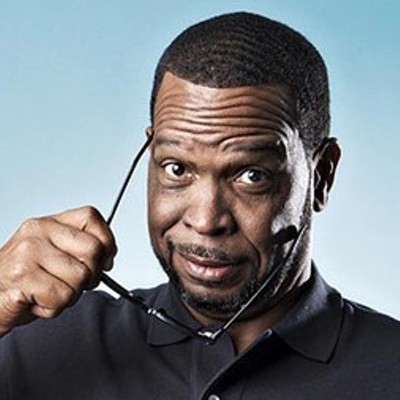The Hurricane Irma recovery effort is in full swing, but once again Miami's hardest-hit African-American communities have to fend for themselves.
In tourist destinations like Miami Beach, TV news reports blast video of crews clearing debris and downed trees and FPL contractors restoring power. Meanwhile, residents in the poorest sections of Overtown and Liberty City are sweltering in cramped apartments with no electricity for days and running out of essentials. And many of them can't afford to take advantage of the discounted rates Miami Beach hotels are offering Florida residents displaced by the hurricane.
The most underprivileged and poorest neighborhoods deserve first priority before, during, and after a hurricane. But history proves that's rarely how they've been treated.
After Hurricane Andrew in 1992, African-Americans living in hardest-hit areas — representing one-third of Miami-Dade's population — largely relied on relatives and friends to survive the aftermath, according to a 2015 National Political Science Review book analyzing black politics in America. It took black politicians like then-county Commissioner Betty Ferguson and civil rights organizations like the NAACP to force FEMA and the American Red Cross to steer recovery resources to heavily damaged areas in the county's African-American communities.
Jobs in the rebuilding effort were also mostly nonexistent for black people, the Review found. FEMA and the Small Business Administration allocated roughly $100 million to the recovery effort, which promised to provide 7,000 construction jobs. Yet only 200 of 6,400 black-owned businesses at the time were certified by local, state, and federal agencies to obtain reconstruction contracts. And only seven of those 200 qualified for performance bonds to do the multimillion-dollar hurricane repair and debris-removal projects.
Now, 25 years later, after another massive hurricane tore through South Florida, black people are still struggling to find work following a storm. A recent WLRN report profiled Liberty City resident Rufus James, who was desperately seeking $10 to $20 odd jobs clearing people's yards so his grandchildren could have something other than cornflakes to eat.
Before every hurricane season, government officials send out notices reminding residents to prepare for the worst and to have their supplies ready. Yet you don't see the mayor or the governor taking steps to protect those who need the most help. If there is a riot, Miami-Dade and the City of Miami always have a response plan in place; they have it down to a science. They should do the same when a hurricane hits. They know what's coming from June to November.
There should be a program in place that trains residents in low-income areas where jobs are scarce to work as temporary relief contractors. They should be placed on a list and, before a hurricane hits, get called in to work. There should be a program where pallets of food, toiletries, and other necessities can be deployed to the poorest neighborhoods.
Instead, African-Americans are left to die.
Follow Luke on Twitter: @unclelukereal1.
[
{
"name": "Air - MediumRectangle - Inline Content - Mobile Display Size",
"component": "19274298",
"insertPoint": "2",
"requiredCountToDisplay": "2"
},{
"name": "Editor Picks",
"component": "17482312",
"insertPoint": "4",
"requiredCountToDisplay": "1"
},{
"name": "Inline Links",
"component": "18711090",
"insertPoint": "8th",
"startingPoint": 8,
"requiredCountToDisplay": "7",
"maxInsertions": 25
},{
"name": "Air - MediumRectangle - Combo - Inline Content",
"component": "17482310",
"insertPoint": "8th",
"startingPoint": 8,
"requiredCountToDisplay": "7",
"maxInsertions": 25
},{
"name": "Inline Links",
"component": "18711090",
"insertPoint": "8th",
"startingPoint": 12,
"requiredCountToDisplay": "11",
"maxInsertions": 25
},{
"name": "Air - Leaderboard Tower - Combo - Inline Content",
"component": "17482313",
"insertPoint": "8th",
"startingPoint": 12,
"requiredCountToDisplay": "11",
"maxInsertions": 25
}
]












